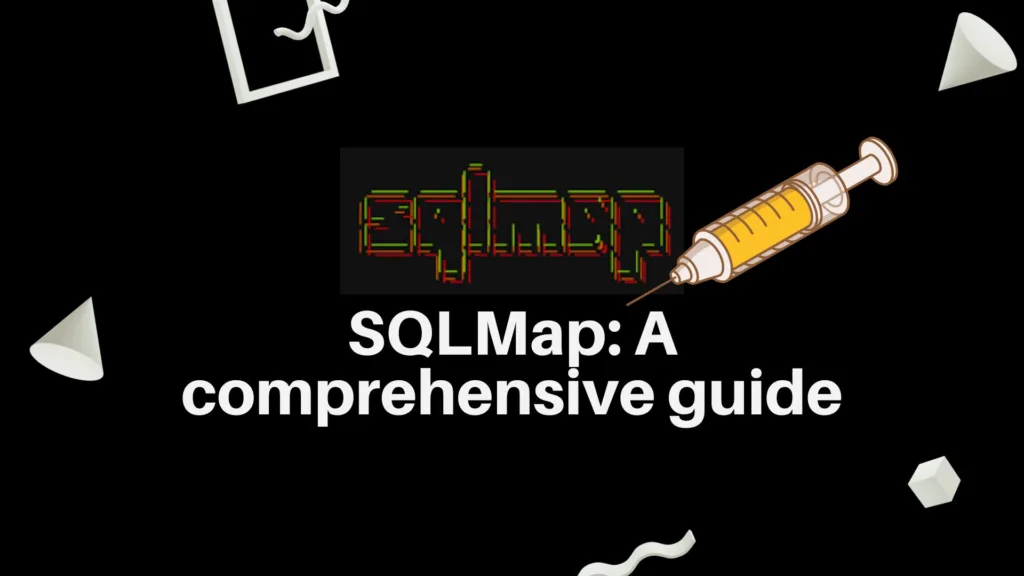
Introduction to Password Cracking
Password cracking is a method used in cybersecurity to recover passwords from data stored or transmitted by computer systems. This process is critical in both offensive and defensive cybersecurity practices. Ethical hackers use password cracking to simulate real-world attack scenarios, helping organizations identify weaknesses in their systems and strengthen their defenses.
Why Password Cracking Matters in Ethical Hacking
In ethical hacking, password cracking plays a major role in identifying weak or easily guessable passwords that could be exploited by malicious actors. Passwords act as the primary line of defense for most systems. When weak or compromised passwords are used, it becomes easier for hackers to gain unauthorized access. Ethical hackers, often referred to as penetration testers, conduct password-cracking exercises to highlight these vulnerabilities.
In practice, password cracking helps identify:
- Weak passwords: Short, simple passwords like “
123456” or “password.” - Common password reuse: Using the same password across multiple platforms increases risk.
- Weak encryption methods: Poor encryption methods are easier to crack.
The Importance of Strong Password Security
Strong password security is the foundation of an organization’s defense against hacking attempts. With the rise of password-cracking tools and techniques, weak or default passwords are at high risk of being compromised. Strengthening passwords is one of the most cost-effective and easiest ways to protect systems.
Key factors for strong password security:
- Complexity: A combination of letters, numbers, and symbols makes a password stronger.
- Length: Longer passwords are harder to crack through brute force.
- Unique passwords: Using unique passwords across different services limits the damage caused by a potential breach.
The following chart illustrates the estimated time required to crack a password based on its complexity and length using brute force attacks:
Introducing Hydra for Password Cracking
Hydra is one of the most versatile and widely used tools for password cracking. It’s capable of brute-forcing login credentials across multiple protocols, making it a valuable tool in both offensive and defensive security.
Hydra’s Supported Protocols Include:
- SSH: Secure Shell for remote access.
- FTP: File Transfer Protocol for managing file transfers.
- HTTP/HTTPS: For testing web login forms.
- SMTP: For testing email services.
Hydra performs brute force and dictionary attacks by trying multiple combinations of usernames and passwords until it finds the correct match. It is a powerful tool for penetration testers to verify how secure a system is against password-based attacks.
In this series, as part of our ethical hacking series (Part 11), we will explore how to set up Hydra, perform various types of password cracking, and understand its role in strengthening security systems.
Hydra’s flexibility in testing multiple protocols ensures that various aspects of an organization’s security are evaluated, making it a critical tool for ethical hackers.
What is Hydra?
Hydra is a powerful and popular tool used in password cracking for penetration testing and ethical hacking. It is widely recognized for its ability to brute force login credentials across multiple protocols, making it a key asset in testing the security of systems.
Definition of Hydra
Hydra, also known as THC-Hydra, is an open-source tool designed to conduct password cracking across various services and protocols. It is capable of performing brute force and dictionary attacks, where it tries a large number of possible password combinations or uses a pre-defined list of possible passwords until it finds the correct one. Hydra is widely used by ethical hackers to test how secure a system is and whether it can resist password-based attacks.
Hydra supports a wide range of protocols, including:
- SSH (Secure Shell)
- FTP (File Transfer Protocol)
- HTTP/HTTPS (Web login forms)
- Telnet
- SMTP (Email services)
- MySQL (Databases)
This makes Hydra a versatile tool for password cracking across various types of services, both on local networks and online platforms.
Key Features of Hydra
Hydra’s primary strength lies in its brute force and dictionary attack capabilities. Here’s how they work:
- Brute Force Attacks: Hydra systematically tries every possible combination of passwords to find the correct one. Although this method can be time-consuming, it ensures that no password is left unchecked.
- Dictionary Attacks: Hydra uses a predefined list of passwords (called a wordlist) to attempt login. This method is faster than brute force but is only effective if the target password exists in the wordlist.
These attack methods are highly effective in environments where weak or commonly used passwords are in place, and they serve as a way to highlight potential vulnerabilities in password policies.
Here’s a comparison of Hydra’s two attack methods:

Legal and Authorized Use of Hydra
It is important to note that Hydra and other password cracking tools should only be used for legal and ethical purposes. Unauthorized use of these tools to crack passwords on systems without explicit permission is illegal and punishable by law. Ethical hackers use Hydra in controlled environments or with explicit authorization to help identify security weaknesses and improve system defenses.
For example, a penetration tester may use Hydra to check whether a company’s SSH or FTP service is protected by a strong password policy. With the company’s approval, the ethical hacker can simulate a password cracking attempt to find out how easily an attacker might gain access.
Hydra’s broad range of supported protocols and its flexibility in handling both brute force and dictionary attacks make it a key tool in any ethical hacker’s toolkit for testing password strength and security vulnerabilities.
This concludes an overview of Hydra’s core capabilities and its importance in ethical hacking. In the following sections, we will dive deeper into setting up Hydra and running specific password cracking attacks using this versatile tool.
Installing Hydra for Password Cracking
This section will guide you through installing Hydra on Kali Linux, macOS, and Windows. Hydra is a versatile tool used for password cracking across various platforms.
Step-by-Step Tutorial for Installing Hydra
1. Kali Linux Installation
On Kali Linux, Hydra is pre-installed. However, if it’s not available or you want to update it, follow these steps:
- Open a terminal and verify if Hydra is installed:
hydra -h
This will display Hydra’s help menu if it’s installed. - If Hydra is not installed, you can install it by running:
sudo apt update
sudo apt install hydra - Once installed, confirm the installation:
hydra -h
2. macOS Installation
On macOS, you can use Homebrew to install Hydra:
- Install Homebrew (if you haven’t already):
/bin/bash -c "$(curl -fsSL https://raw.githubusercontent.com/Homebrew/install/HEAD/install.sh)" - Install Hydra with Homebrew:
brew install hydra - Verify the installation:
hydra -h
3. Windows Installation
For Windows, Hydra isn’t as natively supported, but you can run it using Cygwin. Cygwin provides a Linux-like environment on Windows where you can compile and run Linux applications.
Follow these steps to install Hydra on Windows:
- Install Cygwin:
- Download Cygwin from the official website: https://www.cygwin.com/.
- During installation, select the necessary packages: gcc-core, gcc-g++, make, openssl-devel, and libssh-devel (for compiling Hydra).
- Download Hydra Source Code:
- Download the Hydra source code from its official repository: Hydra GitHub.
- Compile Hydra:
- Open Cygwin and navigate to the directory where you downloaded the Hydra source code.
- Compile Hydra with the following commands:
tar -xvzf hydra-*.tar.gz
cd hydra-*
./configure
make
- Verify Installation:
- After compilation, run:
./hydra -h - You should see the Hydra help menu if the installation was successful.
- After compilation, run:
Verifying Installation
Regardless of the operating system, you can always check if Hydra is installed correctly by running:
hydra -h
This will display the Hydra help menu, showing its available commands and options.
Now that Hydra is installed, you can proceed to use it for password cracking across various protocols like SSH, FTP, and HTTP.
Types of Password Cracking Attacks with Hydra
In this section, we will explore different types of password cracking attacks that can be performed using Hydra. Understanding these attack types is crucial for ethical hackers to effectively test the security of systems. The two primary attack methods we’ll discuss are dictionary attacks and brute-force attacks.
1. Dictionary Attacks
Dictionary attacks use a list of potential passwords, often called a dictionary. This list can include common passwords, phrases, and variations. The idea is to quickly test these passwords against the target account.
- How it Works: Hydra systematically tries each password from the list until it either finds the correct one or exhausts the list. This method is faster than brute-force attacks because it relies on human tendencies to use predictable passwords.
- Example Usage:
hydra -l username -P /path/to/dictionary.txt ssh://target_ip
In this example, replace the username with the target username and/path/to/dictionary.txtwith the path to your dictionary file. The command will test all passwords in the dictionary against the SSH service on the target IP.
2. Brute-Force Attacks
Brute-force attacks involve trying every possible password combination until the correct one is found. This method can be effective but is time-consuming, especially for complex passwords.
- How it Works: Hydra generates passwords based on a defined character set (e.g., letters, numbers, special characters). It tests every combination, making it a comprehensive but slow method.
- Example Usage:
hydra -l username -x 8:12:a -P /dev/null ssh://target_ip
In this example:-x 8:12: a specifies the length of the password (between 8 and 12 characters) and the character set (a for all lowercase letters).- The command attempts to crack the password for the specified SSH service.
Customizing Hydra Attack Options
Hydra offers various options to customize your attacks for better results. Here are some key options:
- Limiting the Number of Password Attempts: You can set a limit on the number of attempts per second to avoid detection. Use the
-toption to set the number of tasks (parallel connections). For example:hydra -l username -P /path/to/dictionary.txt -t 4 ssh://target_ip
This command runs four parallel tasks. - Specifying Timeouts: Setting a timeout helps manage connection issues. Use the
-soption to specify the timeout in seconds. For example:hydra -l username -P /path/to/dictionary.txt -s 5 ssh://target_ip
This sets a five-second timeout for each attempt. - Saving Results: You can save the results to a file for later review using the
-ooption. For example:hydra -l username -P /path/to/dictionary.txt -o results.txt ssh://target_ip
Understanding the types of password cracking attacks, including dictionary and brute-force attacks, is essential for effectively using Hydra. By customizing Hydra’s attack options, you can enhance your password cracking efforts and improve your chances of success while maintaining ethical standards.
Using Hydra for Password Cracking
Alright, folks! Let’s get into the heart of password cracking using Hydra, one of the most powerful tools available for penetration testing. I want to guide you through this, step-by-step, so you get a solid understanding of how to use it in various real-world scenarios. Hydra is versatile and supports a wide range of protocols, making it the go-to tool for ethical hackers. You’ll be using it for protocols like SSH, FTP, HTTP, and more.
But remember, password cracking is only ethical if you’re authorized to perform it—always make sure you’re on the right side of the law!
Understanding Password Cracking in Penetration Testing
Password cracking is one of the key methods for testing how robust the security of a system is. By attempting to break into the system using common or weak passwords, you’re essentially mimicking what an attacker might do. With tools like Hydra, you can simulate brute-force or dictionary attacks to see how vulnerable a system is.
Now, let’s break down the process of using Hydra in some practical scenarios:
Scenario 1: Cracking SSH Passwords with Hydra
One of the most common use cases for Hydra is cracking SSH (Secure Shell) passwords. SSH is a protocol used to securely access a remote system, and cracking weak passwords here can provide insight into system vulnerabilities.
Here’s the step-by-step guide for using Hydra to crack SSH passwords:
- Open your terminal in Kali Linux.
- Run Hydra with the following command:
hydra -l admin -P /usr/share/wordlists/rockyou.txt ssh://192.168.1.100 - Breaking it down:
-l admin: Here, you specify the username you’re trying to crack (replace admin with the actual username if you know it).-P /usr/share/wordlists/rockyou.txt: This flag tells Hydra to use a password list (the famous rockyou.txt wordlist) for the attack.ssh://192.168.1.100: This is the target IP address running the SSH service.
- Watch Hydra in action: Hydra will attempt to log in with different passwords from the wordlist. It will display real-time results if any passwords are successful.
- Success: If it finds a valid password, it will show the username and password that cracked the SSH.
Imagine being hired to test the security of a company’s internal systems. If a system administrator uses weak or default passwords, Hydra can quickly reveal this. Once in, you’ll document the findings and recommend stronger password policies.
Scenario 2: Cracking FTP Passwords with Hydra
FTP (File Transfer Protocol) is still widely used, and some systems are set up with weak login credentials. Hydra can help you assess the security of FTP logins.
Here’s how you can crack FTP passwords using Hydra:
- Run the following command:
hydra -l user -P /usr/share/wordlists/rockyou.txt ftp://192.168.1.150 - Command breakdown:
-l user: Replace user with the actual FTP username if you know it.ftp://192.168.1.150: This points Hydra to the target FTP server.
- Hydra will attempt to login using various passwords from the wordlist and report back if it successfully cracks the password.
- Success: Hydra will display any cracked username-password pairs.
As a penetration tester, if you discover an FTP server with weak credentials, you’d highlight this in your report and advise the client to implement stronger authentication methods, such as switching to SFTP (Secure File Transfer Protocol).
Scenario 3: Cracking Web Login Forms (HTTP/HTTPS) with Hydra
Hydra also supports cracking web-based login forms, which is particularly useful when testing the security of web applications. Many websites are vulnerable to attacks if they don’t implement proper security measures, like account lockout or CAPTCHAs.
Here’s how you can crack HTTP/HTTPS logins:
- Command for web login form:
hydra -l admin -P /usr/share/wordlists/rockyou.txt http-post-form "/login:username=^USER^&password=^PASS^:Login failed" - Explanation:
http-post-form "/login:username=^USER^&password=^PASS^:Login failed": This specifies that you’re targeting a web login form. Replace/loginwith the actual login URL of the web application.- Login failed: This tells Hydra what to look for on the web page when a login fails (you may need to inspect the login form to adjust this).
- Real-Time Progress: As Hydra tests the usernames and passwords, it will log results. If it cracks the login credentials, it will display them.
- Importance of Using Wordlists: Remember, the size and quality of your wordlist (like rockyou.txt) greatly influence your success rate. Larger, more varied wordlists improve the chances of cracking weak passwords, but they may take longer to run.
You’re testing a small web application for a client, and you find that the login form doesn’t have proper security measures like CAPTCHA or account lockout. Using Hydra, you can demonstrate how an attacker might brute-force their way into user accounts.
Tips to Improve Password Cracking Success
- Parallelism for Faster Cracking: Use the
-tflag to control the number of parallel connections Hydra makes. For example, to try 4 passwords at the same time:hydra -l admin -P /usr/share/wordlists/rockyou.txt -t 4 ssh://192.168.1.100
This will speed up the process, but be mindful of the target’s rate limits. - Using Custom Wordlists: Tools like CeWL (Custom Word List generator) can help you generate more specific wordlists by scraping a website’s content. You can then use this with Hydra for more targeted attacks.
- Handling CAPTCHA or Account Lockouts: Some modern web applications include mechanisms like CAPTCHA or lockouts after failed attempts, which can thwart brute-force attacks. In these cases, automated tools like Hydra might not work effectively, so it’s important to test and adapt to each situation.
As an ethical hacker, learning how to use Hydra for password cracking opens up a range of possibilities for testing system vulnerabilities. Whether you’re cracking SSH, FTP, or web login passwords, Hydra’s flexibility makes it a key tool in any pentester’s arsenal. Always remember, your goal as an ethical hacker is to strengthen security—not to exploit it.
Ensure that you document your findings, provide recommendations for stronger password policies, and work towards improving the security posture of the organizations you test. Stay legal, stay ethical, and happy hacking!
Password Cracking Best Practices
As we dive deeper into password cracking, it’s essential to understand the best practices, especially when conducting ethical hacking activities. Cracking passwords should always be done responsibly and with legal authorization. In this section, we will go over some fundamental principles to follow for successful and responsible password cracking while maintaining strong security practices.
1. Always Use Legal and Authorized Access
First and foremost, make sure that you are always conducting password cracking with explicit authorization. Whether you’re doing penetration testing for a client, a company, or testing your own systems, ensure you have legal permission to engage in these activities. Cracking passwords without authority is both illegal and unethical..
2. Choose the Right Attack Method
When cracking passwords, it’s essential to pick the appropriate method based on your target. Common types of attacks include:
- Brute-force attacks: Trying every conceivable character combination.
- Dictionary attacks: Using a list of common passwords or words.
In most cases, dictionary attacks are more efficient than brute-force attacks, especially if you have a large, curated wordlist. Brute-force attacks are slower and should be reserved for shorter or simpler passwords. Select the right attack to optimize your efforts.
3. Use Large and High-Quality Wordlists
A major factor in the success of password cracking is the quality of your wordlist. Password cracking becomes more effective if you use a wordlist that is relevant to the target. Tools like Hydra, John the Ripper, and Aircrack-ng rely on these wordlists. You can find popular wordlists such as the rockyou.txt file, but also consider generating custom wordlists using tools like CeWL that scrape websites to create wordlists from the site’s content.
4. Leverage GPU Acceleration
For cracking complex passwords, particularly when using brute-force methods, GPU acceleration can significantly reduce the time it takes. Tools like Hashcat can utilize the power of modern GPUs to speed up the password cracking process. This approach is especially useful for cracking long or complex passwords that would take significantly longer with CPU-based cracking alone.
5. Combine Multiple Tools
In password cracking, sometimes using a combination of tools can lead to better results. For example, combining Hydra for cracking network protocols like SSH or FTP, and Hashcat for cracking hashed passwords allows for more flexibility in attacking different targets. Combining tools ensures that you are utilizing the most appropriate methods for each specific target.
6. Monitor the System for Security Measures
Modern systems often include security measures that limit or detect password cracking attempts, such as CAPTCHAs, account lockouts, or rate-limiting. Before you initiate a password cracking attack, identify these mechanisms to avoid detection and optimize your attack. Some tools, like Burp Suite, can help bypass basic protections like CAPTCHA.
7. Use Parallelism and Multiple Threads for Faster Results
When using tools like Hydra, you can enable multiple threads using the -t flag to increase the speed of the attack. For instance, using more threads allows the tool to try multiple password combinations simultaneously, improving efficiency. Be cautious, though: some services may detect and block aggressive login attempts if too many requests are made in a short period.
8. Document Your Findings
As an ethical hacker, it’s important to document your password cracking activities. This includes keeping a record of the tools used, attack methods, and time taken. Clearly documenting weak passwords or successful cracks provides evidence that can be used to recommend stronger security practices, such as enforcing complex password policies and multi-factor authentication (MFA).
9. Regularly Update Tools
The tools you use for password cracking are regularly updated with improvements, new features, and better attack techniques. Always keep your tools up to date. Whether it’s Hydra, John the Ripper, or Hashcat, updated versions can improve speed, fix bugs, and introduce new protocol support that can enhance your penetration testing capabilities.
Conclusion
In conclusion, password cracking is a crucial aspect of ethical hacking and penetration testing. It serves as a reminder of how weak or improperly secured passwords can lead to severe security vulnerabilities. By leveraging tools like Hydra, ethical hackers can help organizations identify these weaknesses and take corrective action before malicious attackers exploit them.
Throughout this tutorial, we explored different aspects of password cracking—starting with an understanding of what it is and the importance of strong passwords. We delved into how Hydra operates, installed the tool across multiple platforms, and demonstrated its capabilities with various password cracking attacks. Following best practices, such as choosing the right attack method, using GPU acceleration, and ensuring you have legal authorization, is essential in ethical hacking to maintain professionalism and efficacy.
The end goal of password cracking in ethical hacking is to highlight the importance of robust security practices, including the use of strong, complex passwords and multi-factor authentication. Organizations should be proactive in securing their systems to defend against the increasing number of cyber threats.
By improving password security, both individuals and companies can significantly reduce the risk of cyberattacks and protect sensitive data.




